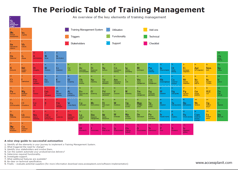4 Tips For Effective Online Research Surveys

Whilst training management software may be useful in reducing the amount of admin that trainers have to deal with, it can also be a crucial part of the marketing function too. Online surveys are growing in popularity, and here’s why trainers should be tuned into them, and some useful tips on generating content...
Once, running surveys to identify market trends and reveal interesting patterns of behaviour, was the exclusive right of market researchers and agencies. Today things are quite different, and fast-developing technology has meant that companies large and small can tap into a pool of potential respondents and, when executed effectively, generate survey results that will be engagement fodder in their chosen market. To put this in context consider how many surveys you come across on social media channels and just how accessible these are to everyone
One sector that will benefit from running surveys, not just aimed at previous course attendees but also to new prospects, is the training industry. Why? Simply because training is a very people-focused industry, and if trainers can stay on top of the latest needs and challenges for the people within their target market, they will be able to design their training content accordingly.
And, to simplify the process, training management software is available to automate the execution, so businesses or individuals can focus less on how they will reach respondents, and more on the content of the survey itself. You may find this whitepaper useful.
And, to help you get your survey up and running, and ensure you get the right level of engagement from the questions asked, here are some helpful tips on generating effective survey content:
1. Stay current
Always be looking for an angle, because this will be the hook that gets your target market reading the survey introduction in the first place. So, a good example would be if you are targeting HR executives for your survey, and there has just been a new piece of employment legislation released. Use this as your ‘in’ to ensure that your potential respondents feel as though you have your finger on the pulse.
2. Keep it concise
Bear in mind the amount of time people have to carry out this kind of work. Your angle may well have got them on the hook, but what’s going to make them stay? Or, more to the point, what will make them leave the page and head back to their emails? By making the questions you ask very concise and to the point, not long-winded or complicated in anyway, you will record a higher response rate. If you can get what you need from ten questions, that’s great. Don’t add questions for the sake of it, be very aware of time.
3. Simple is best
Make the survey as simple as possible to fill out. Tick box style is best, because the more effort you can take out for respondents, the better.
4. Offer value
Value crops up time and time again when it comes to marketing online and engagement, but it is vital. It’s not feasible to give everyone a free course for completion, but at the very least you could mention that anyone who leaves their email address at the end of the survey will receive an exclusive early copy of the report once completed.
Done well, a survey is a great way to engage with your audience and something that very well done across social media. A training management system with CRM simplifies the whole process and has the functionality to issue online surveys and report on the results. If you are interested in finding out more or would like a short tour around the system, get in touch.
Other related articles include:
The 27 best training survey questions to start asking your delegates



.png?width=270&height=170&name=Notes%20(1).png)
